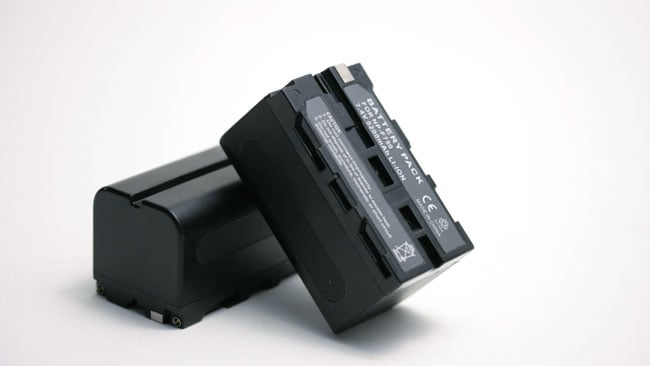
Replay: News of revolutionary new battery technology often hits the headlines, but it is as well to look past the hyperbole to find out what is really going on. Will we ever move beyond Li-ion?
One of the things about being a technology journalist is that every third email tends to be about some amazing new technology that’s been invented by someone in the basement with some cardboard boxes and a stapler which is, according to the inventor, mere weeks from revolutionising the world of, well, something.

With glass battery electrolytes, these lights might go out a lot more slowly
The subject that provokes this article is solid-state battery technology, something that we can probably take some credit for covering a while before the current spike of interest in the subject. But not too much credit, because that was some time ago and, crucially, we still don’t actually have glass batteries with massively more capacity than lithium-ion to power our cameras.
Batteries based on glass are mentioned fairly commonly in this context and have hit the headlines recently, based on exactly the same claim: three times the capacity and more than twice the number of cycles (lithium-ion camera batteries, by which we generally mean batteries with a lithium cobalt oxide cathode, may survive only 500 charges, meaning that some of them cost basically a US Dollar a charge). To be fair, though, glass batteries keep coming up because they really are one of the more promising ways we might improve on lithium-ion, bearing in mind the fact that lithium-ion is already a pretty significant improvement on the likes of nickel-metal hydride and nickel-cadmium.

It's not just about greater capacity — these Bebob V150 Micro batteries were engineered for compactness
Understanding how batteries work, a layman's guide
Understanding all this requires a basic understanding of how all batteries work. Most practical batteries involve several cells, each of which is an individual package of chemical components required to accept and release electrical charge. This happens because of the presence of two dissimilar metals. Quantum physicists will wince at the simplification we’re about to use, but when electrons orbit the nucleus of an atom, they exist in one of several energy states called orbitals. Orbitals can be visualised as shells or as electrons orbiting at different distances from the nucleus. Each orbital can accommodate a fixed number of electrons and the atom is most stable if the outermost shell which has electrons is full.
If the outermost shell is less than half full, particularly if it is much less than half full or has only one electron, the atom will have a tendency to donate electrons to other atoms when forming compounds with them. This is called electronegativity because electrons are negatively charged. If the outermost shell has many atoms but is not full, the atom will seek to receive shared electrons from other atoms, which is called electropositivity. There are various ways this joining of two atoms and the sharing of their electrons can occur, as evidenced by the different battery technologies that exist using different materials. Anyone who has experimented with sticking bits of metal into a lemon to create a battery will be familiar with the fact that the two bits of metal have to be of different types: the voltage created by a cell is controlled by the differences between the electron configurations of the materials used, which is why all batteries of a given chemistry have about the same voltage per cell regardless of how big the cell is.

Yes, we'd like to be able to run very big lights for long periods using batteries
The purpose of the glass in the new design is to behave as an electrolyte – the lemon juice in our physics classroom experiment. The safety problem with current lithium-ion batteries is generally the fact that the electrolyte is a flammable liquid, a problem glass would solve. One of the controversies of (one variant of) the glass battery technology that’s been discussed is that it uses the same metal twice. Based on the understanding we discussed above, that shouldn’t create a battery, because there should be no exchange of electrons. John Goodenough, inventor of lithium-ion batteries – a highly respected Nobel laureate and associate of Maria Helena Braga, the physicist most widely credited with work on glass electrolyte – has offered an explanation. It’s based on comparative Fermi energy levels in extremely thin metal layers, at which point we will stop digging and invite any PhD physicists in the audience to comment below. Certainly we’d all like it to work.

All shapes and sizes
And, to return to our original point, great as all this sounds – and it does – it is still firmly at the laboratory stage. Naturally, companies like Tesla are high on the list of parties interested in battery technology and in a 2017 conference call even the famously enthusiastic Elon Musk has publicly said something that we’d all do well to observe:
“Send us a sample or, if you don't trust us, send it to an independent lab where the parameters can be verified. Otherwise, STF… everything works in Powerpoint.”
Yes, he was talking about battery tech and he also mentioned “things on the horizon”, but even once a company has verified an idea works, it’ll still be five years until it’s a product.
Tags: Technology


Comments